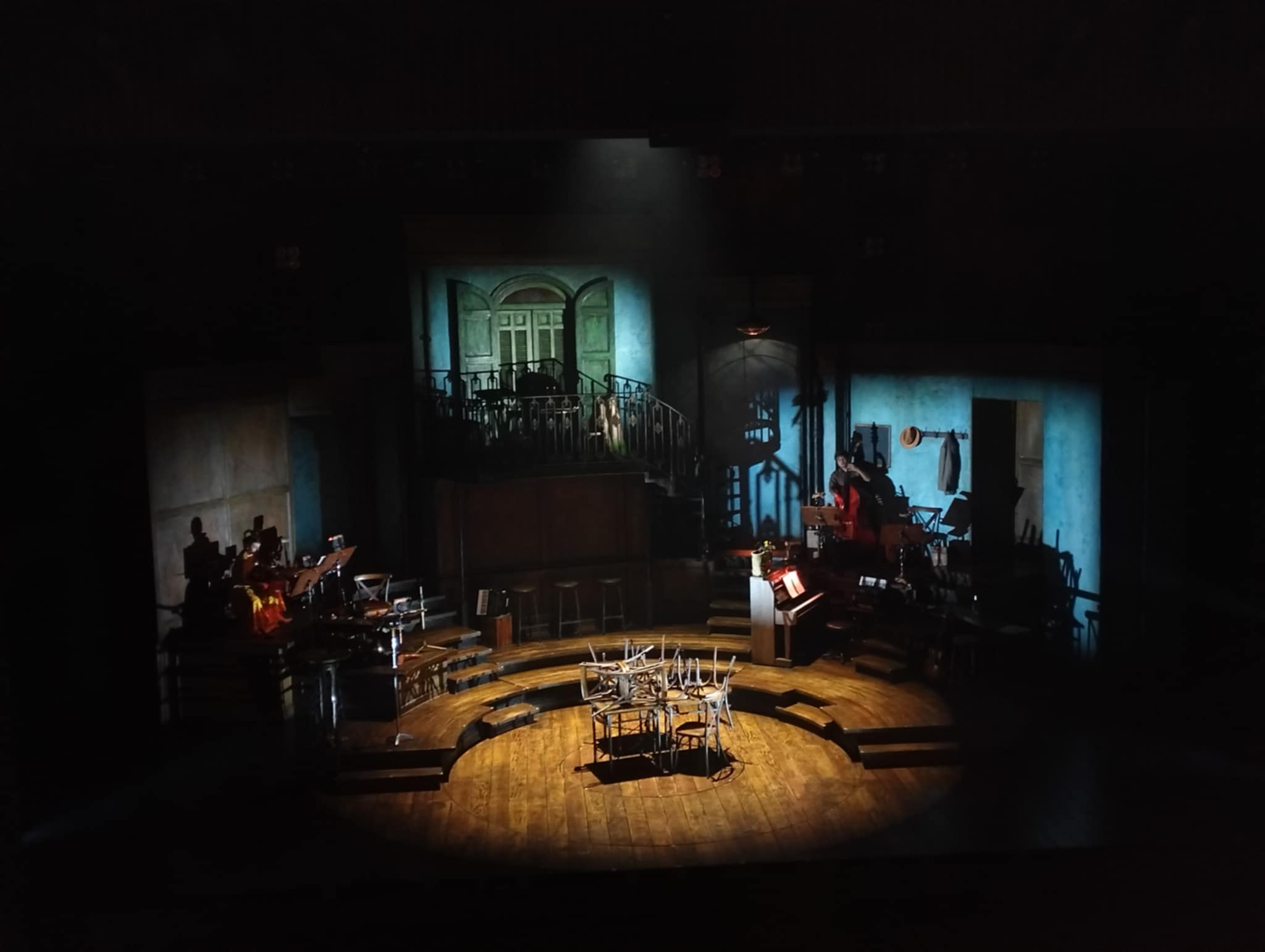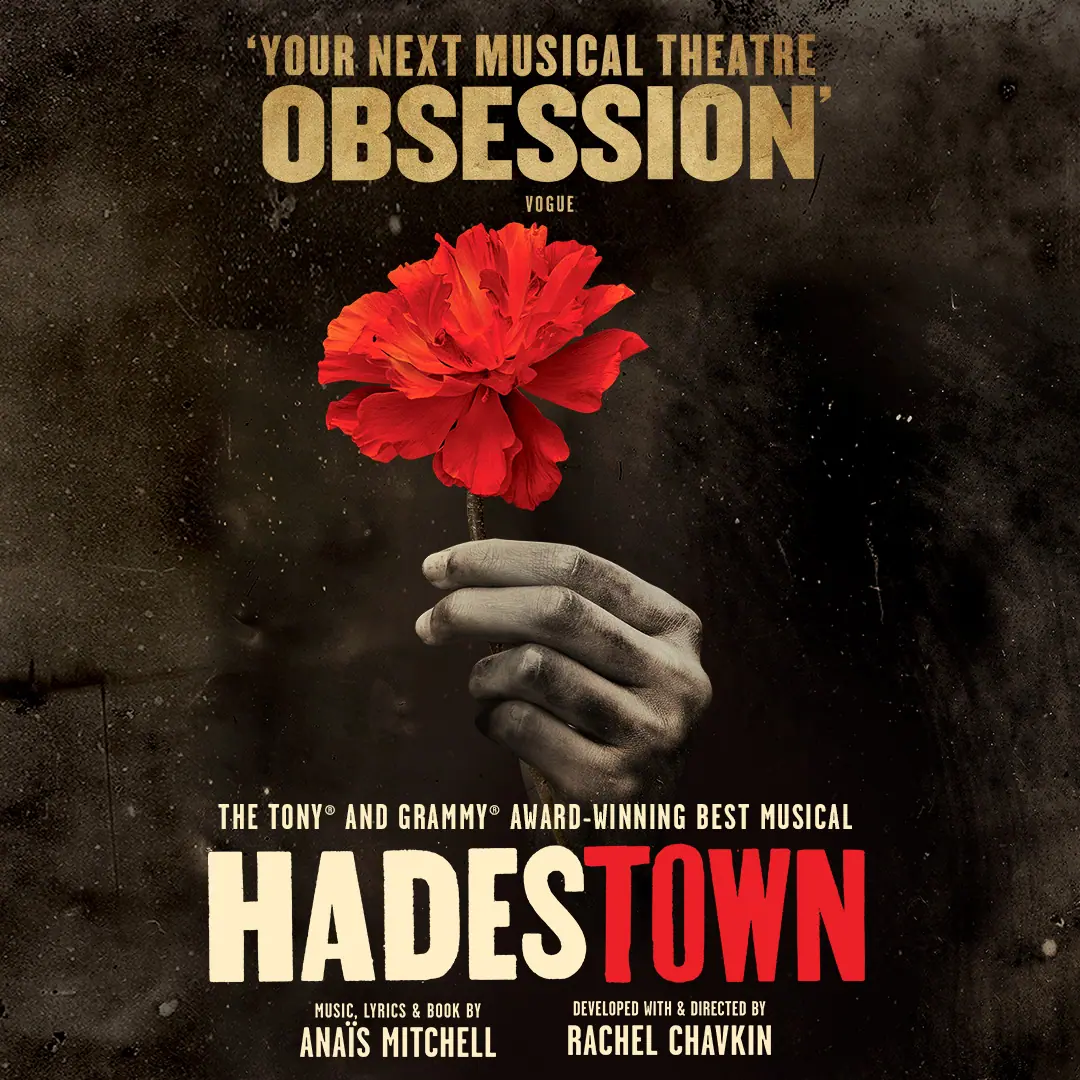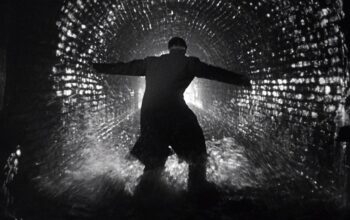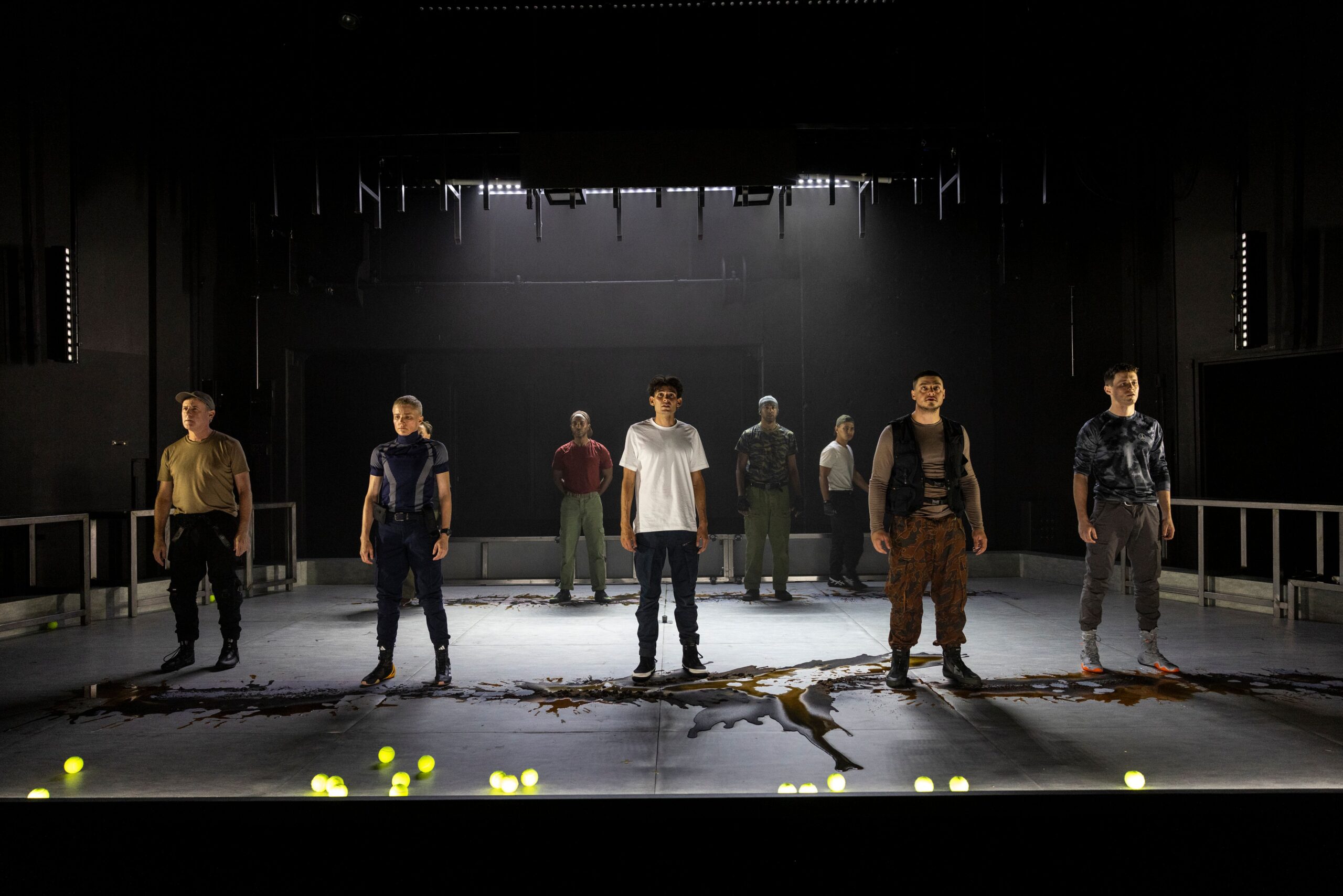In 2006, a writer by the name of Anaïs Mitchell wrote a song called ‘Why We Build The Wall,’ created for the first-ever version of her musical Hadestown. It’s sung by Hades, the King of the Underworld, contextualised in Hadestown as some kind of capitalist hellscape populated by nameless, identity-less, seemingly mindless workers. Hades has his workers building a literal wall around Hadestown, telling them that the wall is keeping out ‘the enemy’ to ‘keep us free’ as he walls them into the Underworld. At the same time, he’s building a metaphorical wall through the words he sings, trapping the workers in his ideology and keeping them from questioning through a circular logic preying on their fear.
A decade later, ‘Why We Build The Wall’ was starting to feel eerily familiar – something Mitchell herself identified in a 2016 submission to the Huffington Post. Now, after almost ten more years, amid ever-worsening climate disasters, humanitarian crises, and unsurvivable costs of living, Hades’s real-life counterpart is back and more terrifying than ever. Meanwhile, Hadestown shows no signs of stopping. After a three-year journey through Off-Broadway, Canada, and London, it opened on Broadway in 2019, surviving COVID shutdowns to become the Walter Kerr Theatre’s longest-running production. Since then, it’s had a US tour, an ongoing West End run, productions in South Korea, and finally, its long-awaited Australian premiere in Sydney in January of 2025. It’s an all-time favourite among the countless theatrical productions I’ve seen, its 2019 cast album my coping mechanism of choice during the perils of the COVID pandemic and my Year 12 exams. After five years, I still find myself noticing more details and new ways to connect to it.

So what is it that makes Hadestown so enduring? Why do we keep coming back to this retelling of an ancient story, despite many of us already knowing it will end in tragedy?
First of all, Hadestown is a musical that can only be described as epic. Its music is lush and emotive, inspired by folk balladry and New Orleans jazz and played by an onstage band. The lived-in, unassuming look of the set welcomes us into a place that feels familiar, guided by a deeply human cast of characters. Mitchell’s lyrical storytelling, written and rewritten over and over since that first iteration, is carefully and masterfully crafted, with not a single word wasted. We are fully immersed in Hadestown’s rich and deeply tangible world, rooting for its unconventional hero, Orpheus, with every fibre of our being (check out some of the ways that people react to that moment).
This Australian cast are phenomenal, from Christine Anu’s exuberant Hermes, to Elenoa Rokobaro and Adrian Tambourini’s perfectly complementary Persephone and Hades, to Abigail Adriano’s raw emotion as Eurydice, and Noah Gill Mullins’s adorably earnest Orpheus. It’s rounded out by three captivating and satisfyingly sinister Fates (Sarah Murr, Jennifer Trijo, Imani Williams), the lively, vibrant ensemble, and some big personalities in the band, led by musical director Laura Tipoki. So many moments are simply unforgettable – the iconic swinging lamps in ‘Wait For Me’ sent chills up my spine, even after the countless clips I watched to stay sane during lockdown.
The real highlight of Hadestown, though, the thing that has kept me coming back ever since the first time I listened to it way back in 2020, is that it is so reminiscent of the real world. Its political relevance only seems to grow stronger and stronger. Issues like the climate nightmares affecting food supplies, the dehumanisation and dispensability of workers at companies like Amazon, and the brutal punishments for protesting against injustice, are reflected by the world of Hadestown. The way King Hades talks about women has always been misogynistic and disgusting, but the growing influence of the alt-right on young men adds a new level of horror.
You may ask: how is that a highlight? But, as depressing as it may sound, Hadestown is filled with love, joy, resistance, hope, and the courage to keep trying even if we’ve failed before. ‘Livin’ It Up On Top’ could easily be you and your friends on a Saturday night; Orpheus’s toast ‘to the world we dream about, and the world we live in now’ reminds us to relish these moments of community and beauty even in the throes of fighting for our lives. ‘If It’s True’ is a powerful call to action, and watching Orpheus galvanise a workers’ resistance is deeply heartening. We watch with bated breath as he sings for his life, trying to remind Hades of his love and humanity, and by the time Eurydice is belting that part of ‘Wait For Me (Reprise)’ we are truly, deeply rooting for Orpheus to succeed. Hadestown reminds us to fight for a better world, even if we could fail, even if it hasn’t always worked out, even when we’re full of doubt – because maybe it will turn out this time. In its own words: it can make us see how the world could be, in spite of the way that it is.




